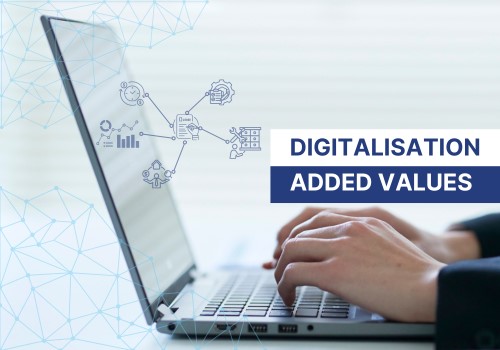Sustainable Commercial building and PFM Digitalisation

In today’s world, sustainability is more than just a buzzword; it’s the #OnlyWayForward.
As climate change continues to pose significant challenges, the need for sustainable best practices in every layer of our society has never been more urgent. Commercial buildings, where we spend more than 90% of our life-time and which account for a substantial portion of global energy consumption and greenhouse gas emissions, are at the forefront of this green-transformation.
By adopting sustainable practices, leveraging digital solutions for property and facility management, we can create a greener, more efficient future.
The Urgency of Sustainability
Commercial buildings are responsible for approximately 40% of global energy consumption and 33% of greenhouse gas emissions! These staggering numbers underscore the critical role that buildings play in our environmental footprint and the impact they could have if managed sustainably.
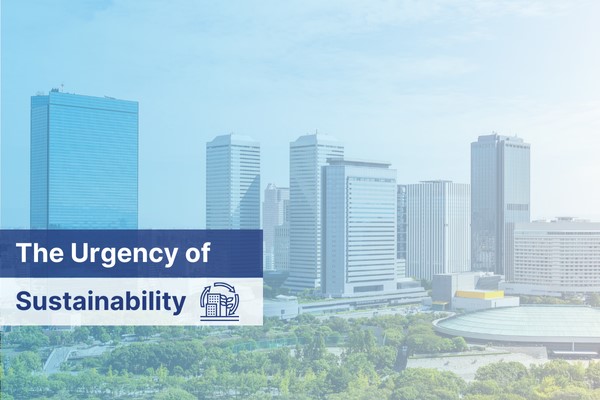
As urbanization grow rate continues to rise at global level and unprecedented pace, the demand for energy-efficient and sustainable buildings becomes even more pressing.
The Benefits of Sustainable Buildings
Let us dive first in the benefits that all stakeholders could gain by turning today’s property and facility management practices into more sustainable ones.
Energy Efficiency
One of the most significant benefits of adopting tech-solutions in buildings is their ability to help reducing energy consumption.
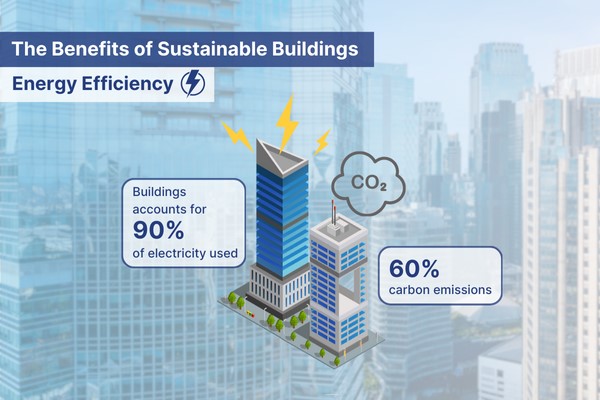
By incorporating energy-efficient technologies such as LED lighting, smart HVAC systems, IoT, smart sensors, and solar panels, buildings can significantly lower their energy usage. This not only reduces operational costs but also minimizes the environmental impact.
Improved Indoor Air Quality
Sustainable buildings often feature advanced ventilation systems that improve indoor air quality. This is particularly important in commercial spaces where occupants spend a significant amount of time. Better air quality can lead to improved health and productivity for employees.
Water Conservation
Implementing water-saving technologies such as low-flow fixtures and rainwater harvesting systems can drastically reduce water usage in commercial buildings.
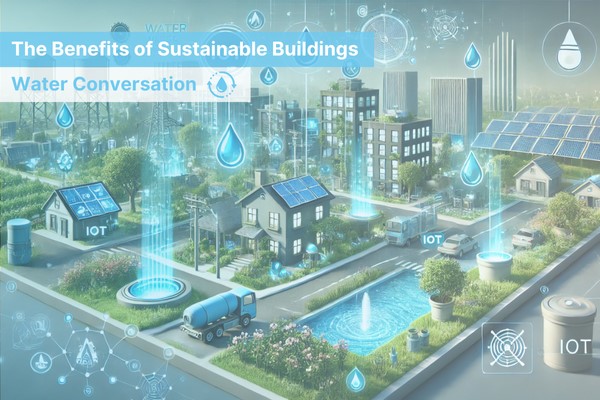
This is crucial in areas facing water scarcity and helps in preserving this vital resource.
Waste Reduction
Sustainable buildings prioritize waste reduction through recycling programs and the use of eco-friendly materials. By minimizing waste, these buildings contribute to a circular economy and reduce the strain on landfills.
The Transformative and Sustainable Role of Digital Solutions
Digital solutions are revolutionizing the way we approach sustainability in commercial buildings. By integrating Internet of Things (IoT) devices, artificial intelligence (AI), and advanced analytics, we can create smart buildings that are not only efficient but also adaptive to changing conditions.
Overall Real-Time Monitoring and Control
IoT devices enable real-time monitoring of various building systems, from lighting and HVAC to water usage and security. This allows facility managers to make data-driven decisions and optimize operations for maximum efficiency while reducing the impact on resources consumption.
Predictive Maintenance
AI-powered predictive maintenance can identify potential issues before they become major problems. By analysing data from sensors and equipment, these systems can predict when maintenance is needed, reducing downtime and extending the lifespan of assets.
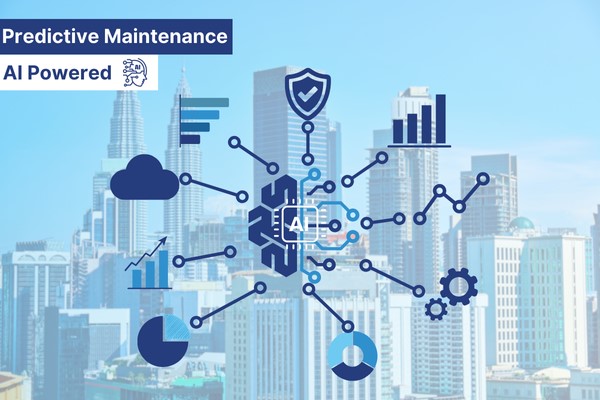
This will substantially impact the energy consumption footprint of the building while raising its energy efficiency.
Energy Management
Advanced energy management systems can analyse energy usage patterns and suggest optimizations. For example, they can adjust lighting and HVAC settings based on occupancy and weather conditions, ensuring an energy efficient and effective usage!
Occupant Comfort and Productivity
Smart buildings can provide personalized on-demand environments for occupants. By adjusting lighting, temperature, and air quality based on individual preferences, these buildings can enhance comfort and productivity.
Sustainability in Action
As words do not deliver results, let’s now mention some of the many success stories, from around the world, proving how adoption of digitalised solutions for property and facility management have substantially increased the “green performance” of commercial and healthcare spaces.
Office Spaces
In modern office spaces, sustainability is becoming a key differentiator and a preferred plus point for investors. Companies are increasingly looking for green buildings that align with their corporate social responsibility goals.
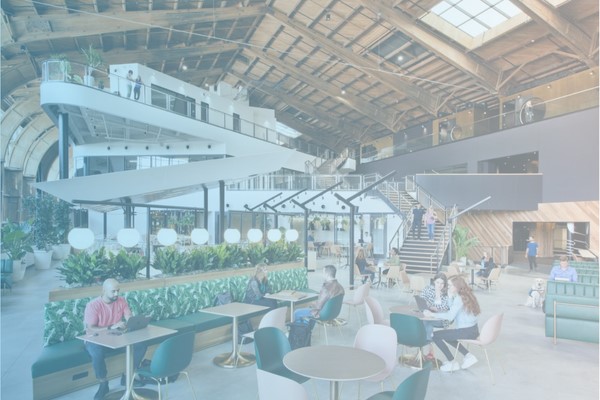
Google, in Silicon Valley and across its world offices, has implemented a comprehensive sustainability program inclusive of solar panels, energy-efficient lighting, and a smart HVAC system. The result was a 30% reduction in energy costs and a significant improvement in employees’ satisfaction.
Shopping Malls
Shopping malls are also embracing sustainability to attract ESG and eco-conscious consumers by using it as “New & Sustainable Xperience”. Sunway Group, within its diversified assets portfolio, has several malls and has been a leading example in Malaysia.
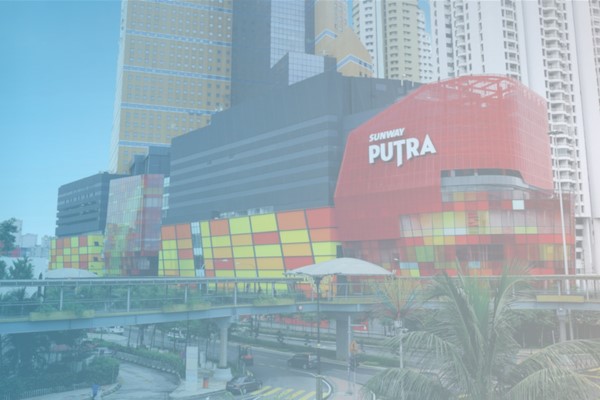
Malls should be integrated with IoT devices to monitor and control lighting, HVAC, and water usage. This not only reduced operational costs but also created a more pleasant shopping experience. The mall’s sustainability efforts were recognized with a green building certification, boosting its reputation and attracting more tenants. For malls under R.E.I.T., sustainability is no longer a choice but a must have to become more appealing to investors.
Hospitals
Hospitals, with their complex environments, can greatly benefit from sustainable practices. A hospital in Europe, the Karolinska University Hospital in Sweden, implemented a smart building solution that included real-time monitoring of energy and water usage, predictive maintenance for critical equipment, and advanced ventilation systems.

These measures led to a 25% reduction in energy consumption and improved patient outcomes due to better indoor air quality and 100% efficiency of all the hospital’s equipment.
The Future of Sustainable Buildings
The future of sustainable buildings lies in the integration of advanced technologies and innovative practices. As regulations become stricter and the demand for green buildings increases, the adoption of digital solutions will be crucial. By leveraging technology, IoT, AI, and data analytics, we can transform buildings to become not only environmentally more friendly but also economically viable and appealing for investors.
Conclusion
Sustainability in commercial buildings is no longer an option. Recently, on September 12th and 13th at the REThink HK event, the organiser, underlining the importance of sustainability, launched a very strong message through the event’s hashtag #OnlyWayForward.
By adopting sustainable practices and leveraging all-in-one and fully integrated digital solutions such as ServeDeck, we can create a greener, more efficient future.
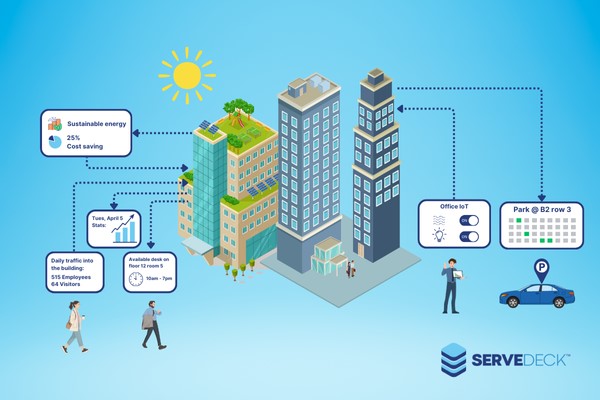
ServeDeck is at the forefront of this transformation with its innovative property and facility management solutions helping building owners and property managers to achieve their sustainability goals.
To learn more about how ServeDeck can help your property become more sustainable, visit ServeDeck’s website here or get in touch via email to request a demo.
Together, we can build a greener future and move towards building management excellence!
ABOUT THE AUTHOR
The .jpeg) opinions expressed in this article are solely of the author, Dr Daniele Gambero.
opinions expressed in this article are solely of the author, Dr Daniele Gambero.
Dr Gambero has been an expatriate to Malaysia from Italy, since 1998 and has more than 35 years of real estate experience. He is the co-founder and group CEO of REI Group of Companies, the Co-founder of Propenomy.com and the president of the Malaysia Proptech Association.
In the past 10 years Daniele, as international and TEDX speaker, has engaged several hundreds thousand people talking about Property, Economy, Propenomy, Digital Marketing and Motivation. He is also a bestselling author and columnist on several magazines and main stream media. You can reach him directly through his LinkedIn page here.
SHARE THIS POST:
Comments (0)
Leave a Reply
Your email address will not be published. Required fields are marked *



